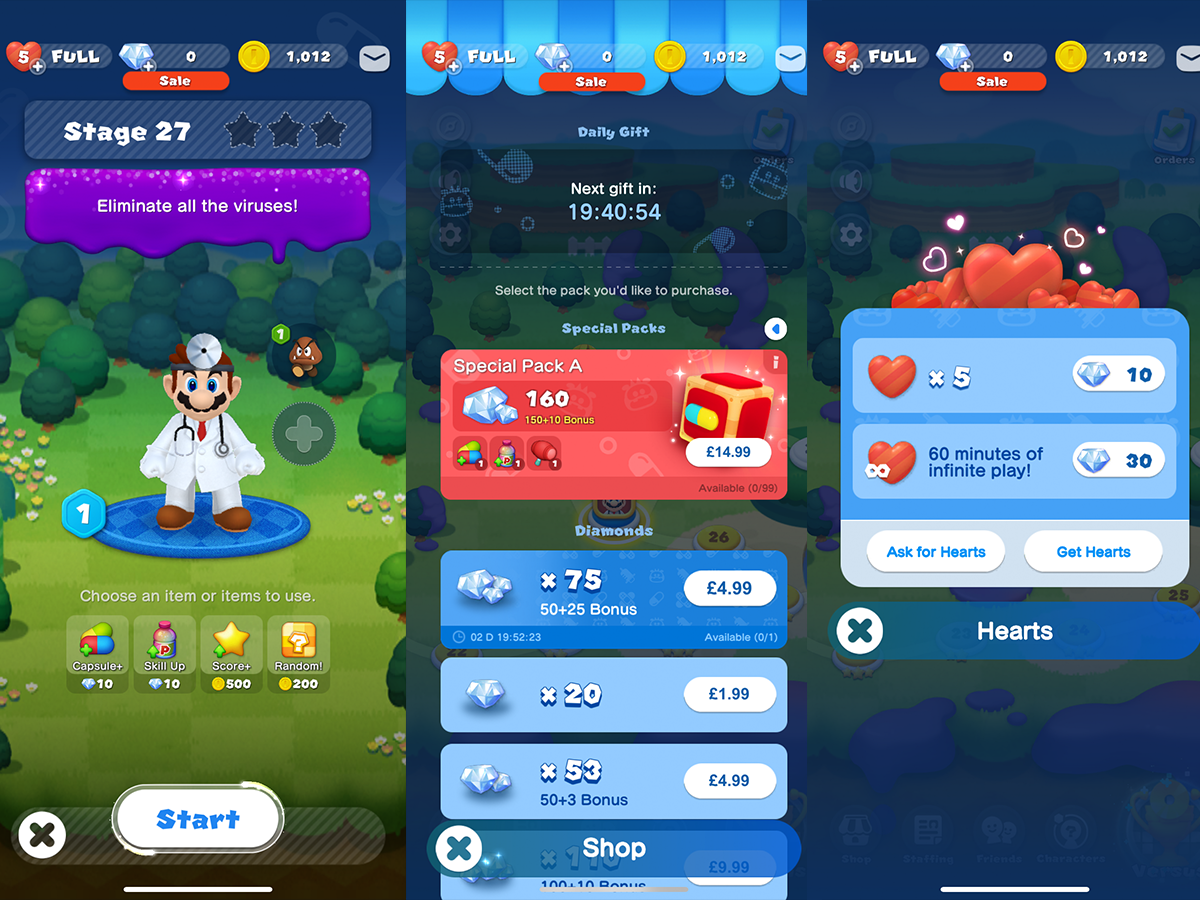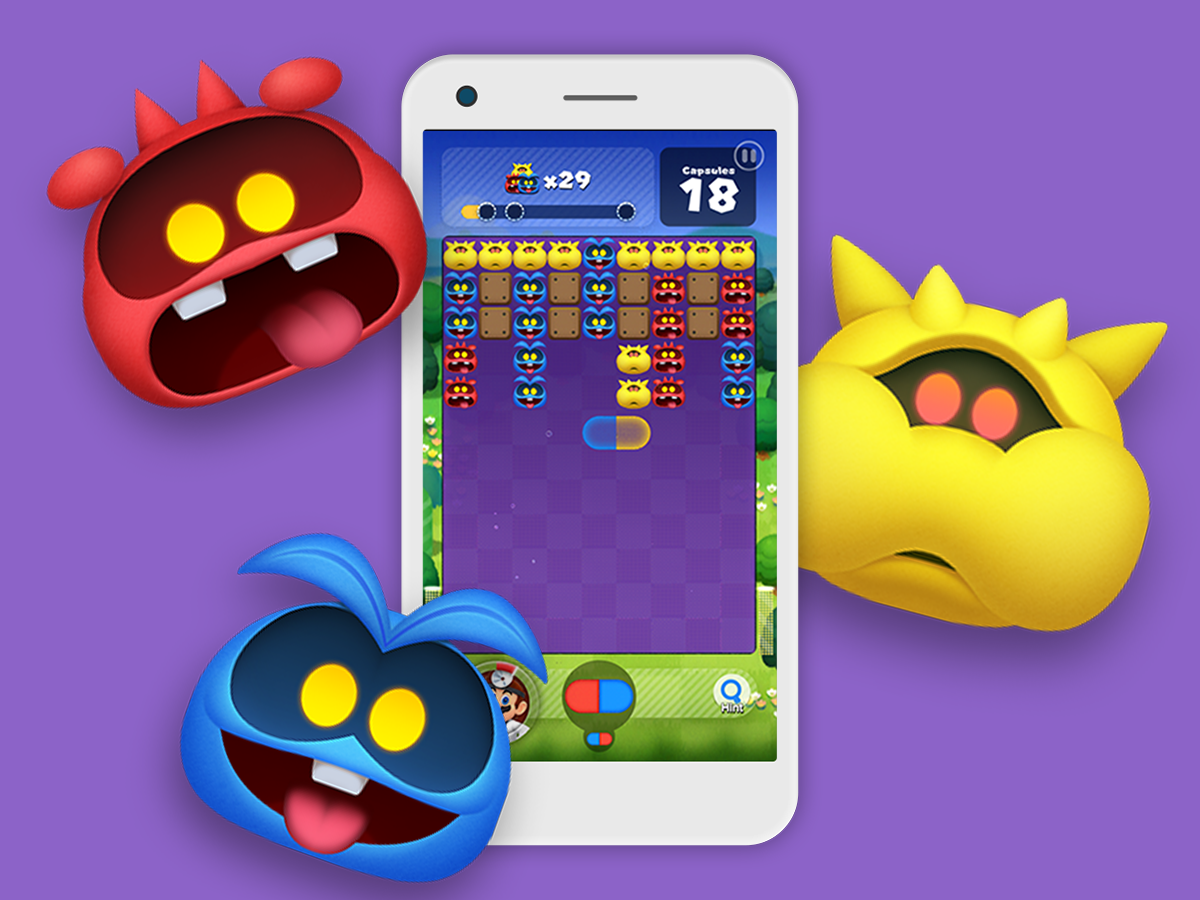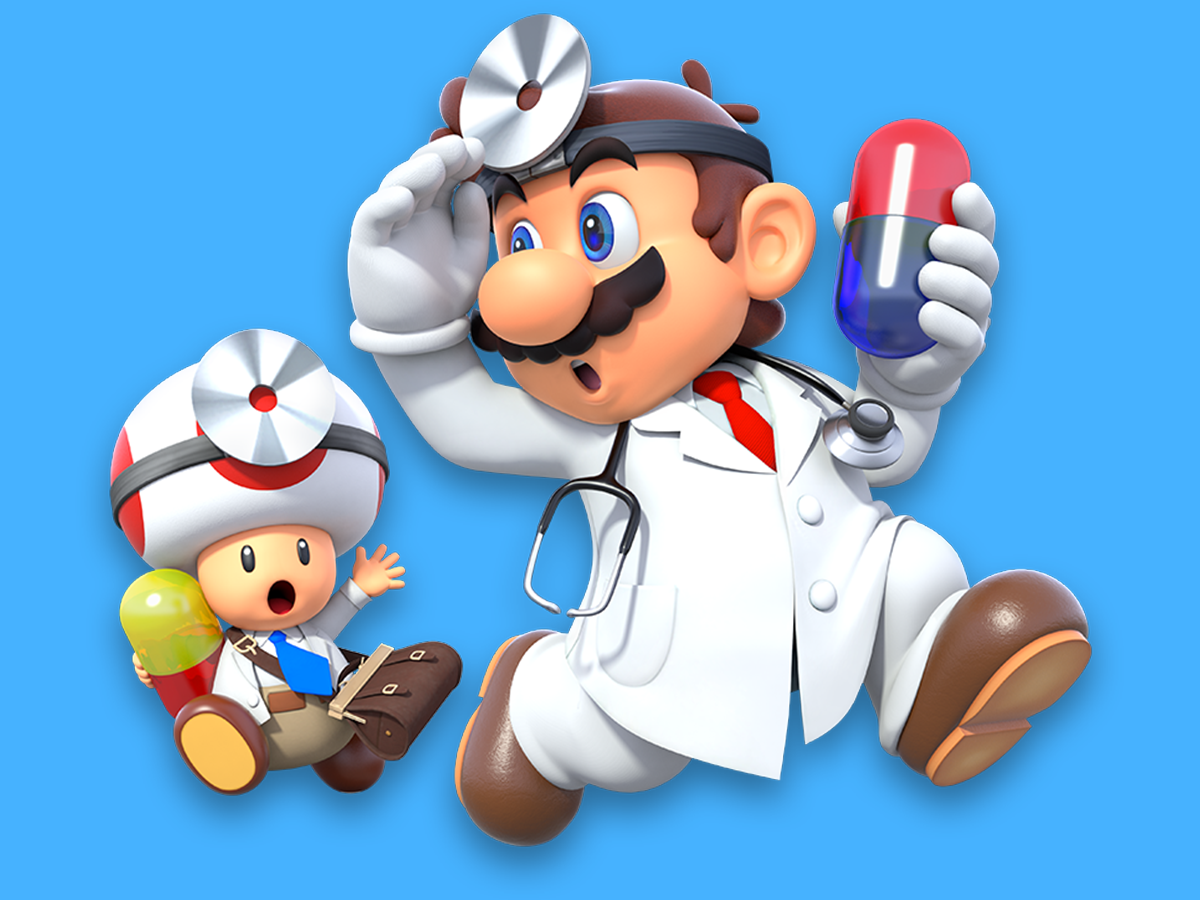Dr. Mario World shows Nintendo needs to course correct on mobile
Somebody call a doctor

Nintendo has been making waves again. The Japanese giant stole the headlines earlier this week with the unveiling of the streamlined Switch Lite (which you can read about here), and also turned heads over its curious handling of Dr. Mario World – a new mobile title that’s significant for being, well, bang average.
That might sound like a nasty swipe at a game that’s by no means terrible, but it’s the blunt truth. At a quick glance, Dr. Mario World has all the trappings of a pleasant enough match-3 effort, and comes across as a polished if rather derivative puzzler that offers a satisfying base challenge while using a handful of carefully curated mechanics to mix things up.
Essentially a cross between Candy Crush and Tetris, Dr. Mario World requires players to match blocks – known as capsules, in this case – to clear levels of colourful viruses. Capsules can be repositioned and rotated after they’ve been dropped into a level and unlike most match-3’s fall from the bottom up. That in combination with a competitive multiplayer mode adds a dash of spice to the tried and tested puzzle formula that’s flourished on smartphones, even if it doesn’t do enough to make Dr. Mario World feel like a true pioneer of the genre.
Still, it’s hardly a crime that Dr. Mario World doesn’t reinvent the wheel, right? It’s still a servicable game elevated by some familiar Nintendo sheen, and that’ll be good enough for most people. No, the biggest issue with Dr. Mario World is how it takes a cynical nosedive into monetisation bedlam after roping players in with its initial promise.
A bitter pill to swallow

Once you complete the first 20 levels to clear the tutorial area, Dr. Mario World shows its true colours. It begins asking you to spend hearts to play new stages, and while they can be earned in-game, they’ll soon diminish when you encounter a particularly vexing puzzle. Hearts, of course, replenish over time (every 30 minutes to be precise) and can also be purchased with diamonds, which are Dr. Mario World‘s in-game currency. 10 diamonds will grant you an extra five hearts, while 30 diamonds will net you 60 minutes of unlimited, heart-free playtime. Players can also drop cash on a variety of Special Packs, which are bundles that contain a selection of diamonds and power-ups that can be used to make puzzles easier.
Those power-ups can also be bought at random using coins earned by completing levels and challenges in-game, but if you’re after a specific boost you’ll again need to spend those shiny diamonds. New characters, each with unqiue traits them make them useful in single and multplayer, will also need to be purchased with diamonds unless you’ve got the paitence to earn thousands of coins. It’s a lot to take in, so hopefully you’re still with me, but the fact that I’ve just had to explain how Dr. Mario World makes use of three separate in-game currencies is indicative of how far Nintendo has veered off course.
Aside from being preposterously convoluted, the freemium model used by Nintendo also directly impacts how Dr. Mario World plays. Some of the game’s challenge levels – more difficult stages that offer bigger rewards – appear designed to pull players in and drain their resources. Indeed, enticed by the prospect of great riches and an overdue ego boost, I quickly burned through my hearts trying the first set of hard-as-nails puzzles. I completed one, but the second still has me stumped. It’s a frustrating scenario that means I’m actively avoiding playing a portion of the game because it’ll cost me lives, and unless I’m willing to fork out for more (or pay for power-ups to make the stage easier), lock me out of the rest of the game for a good half hour.
Nothing ventured, nothing gained

It’s a melancholic situation to be in as a Nintendo fan. Here you have a company that built a reputation on taking risks, putting gameplay first, experimenting in ways no one else could, and generally marching to the beat of its own drum seemingly throwing those principles into the abyss and joining the masses using bleak monetisation practices designed milk players. Where’s the innovation, or the desire to even risk failure in the hopes of achieving something truly unique? That’s the Nintendo I know and love.
I’m well aware I sound jaded, but Nintendo has never been a developer that follows others just to survive. So why does it seem content to do precisely that on mobile? It almost feels like after Super Mario Run, the company’s first proper mobile game, failed to succeed as a premium title, Nintendo got cold feet. If the famous plumber couldn’t make the one-time-payment model work, what hope did its other properties have? Better for the firm to cut its losses now and follow the pack.
Nintendo should absolutely want to make money on mobile, but not by compromising its core values. It has never been content with shipping unoriginal games with the sole purpose of earning a quick buck, but it feels like that’s where it’s heading now. Rumour has it that Nintendo’s next mobile offering, Mario Kart Tour, leans even more on in-app purchases than Dr. Mario World. Although we’ll need to wait and see if those rumblings prove true, the fact we’re even entertaining that possibility has me worried for the company’s mobile future.
WISE WORDS FROM AN OLD FRIEND

As it stands, even if Dr. Mario World was a paid title I wouldn’t pick it up. While it’s hardly the worst match-3 on the market, and I’m sure fans of the genre will find enough to tide them over for a while, the core gameplay is a far cry from top of its class. If it hadn’t been a Nintendo title that lets you bust blocks as Mario, Bowser, and the rest of the gang, would Dr. Mario have been met with the same warm reception from the press? I genuintely doubt it.
Ultimately, it feels like Nintendo needs to start respecting the mobile platform, go back to the drawing board, and create experiences that push the envelope in a bold new direction. I’m confident the company will continue to make heaps of cash by churning out more run-of-the-mill games propped up by its famous mascots, but in doing so it risks losing a part of itself. Right now it feels like its attidude towards mobile players is apathetic at best, and that’s a huge red flag.
After all, imagine a world where Nintendo hadn’t dared create a handheld with two screens, or one where it chose to scrap the idea of a gamepad with a built-in touchscreen after the Wii U failed. Nintendo’s sheer determination to surprise fans and change the industry has always bred success, and now it needs to step back, take a deep breath, and find the resolve to do precisely that.
As the late, great Nintendo president Satoru Iwata once said: "It is valuable to devise an offshoot of a current idea. But it is invaluable to come up with a brand-new idea of what a game can be."



